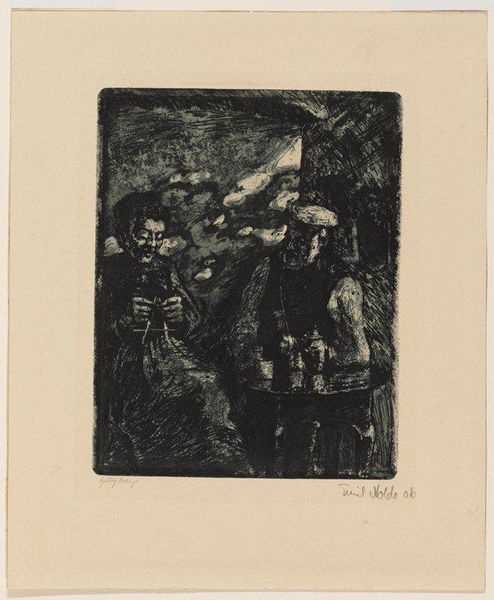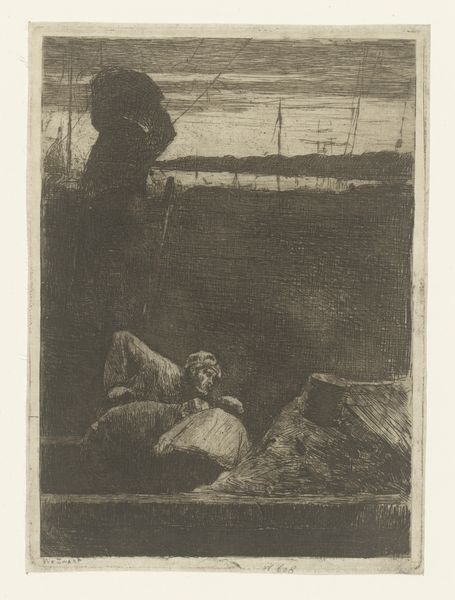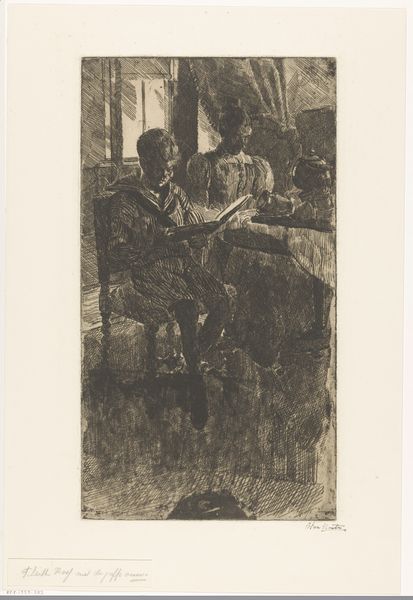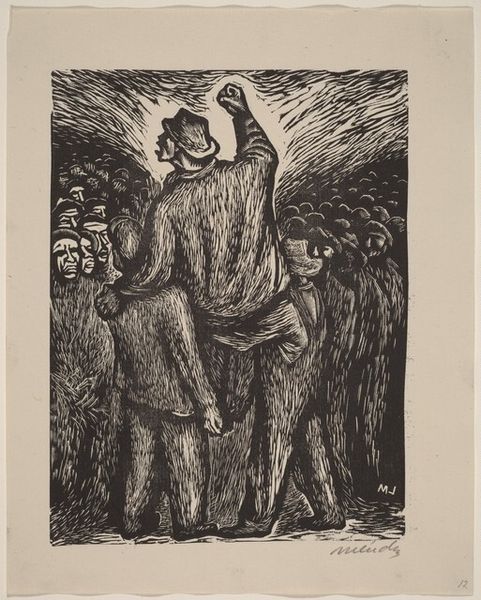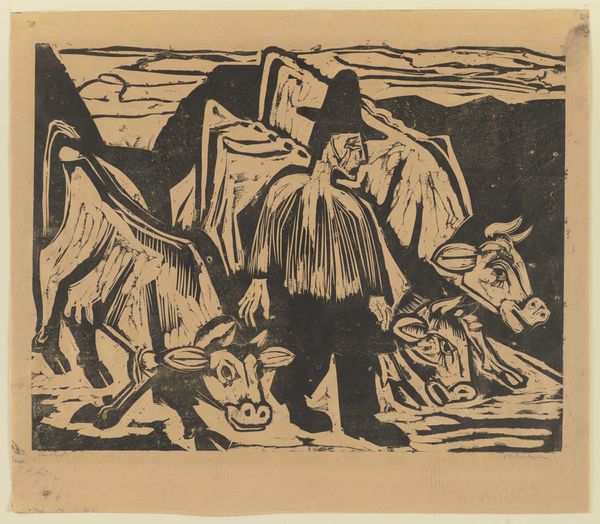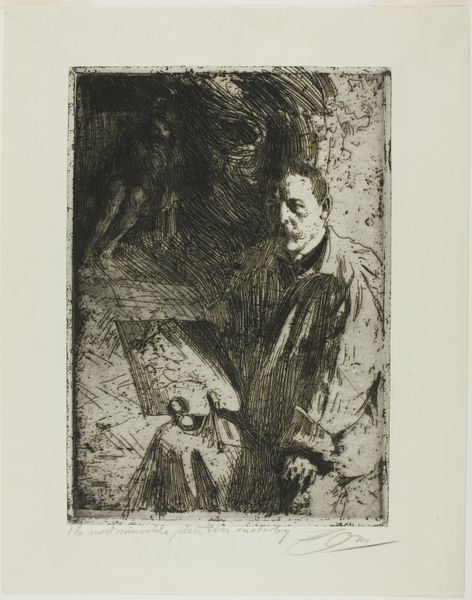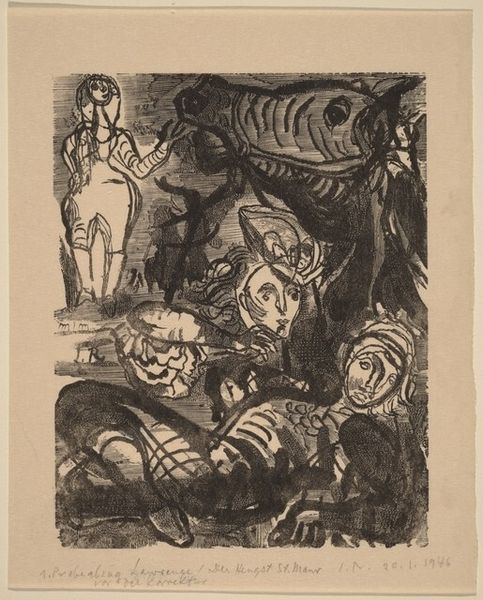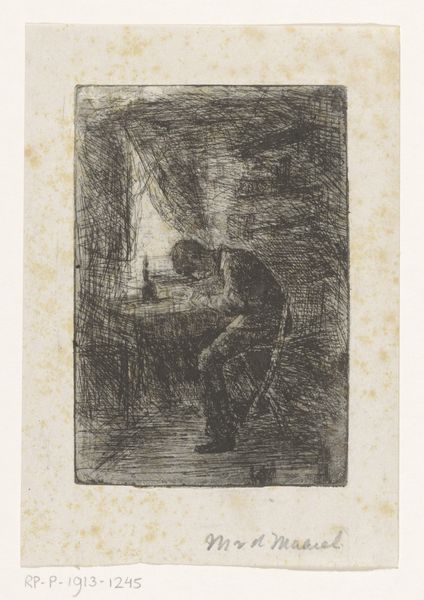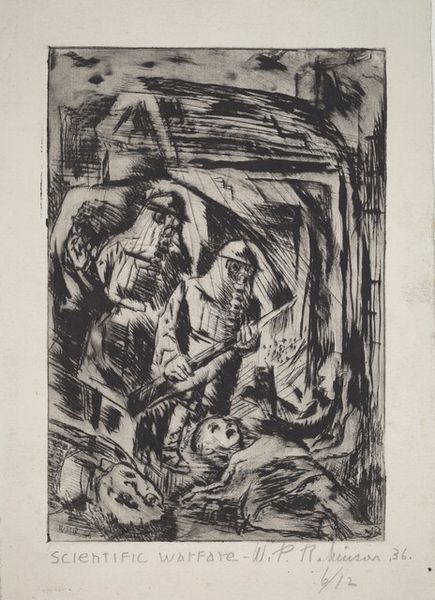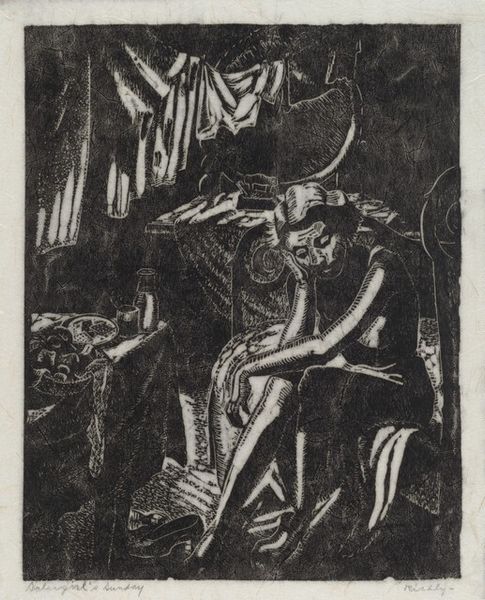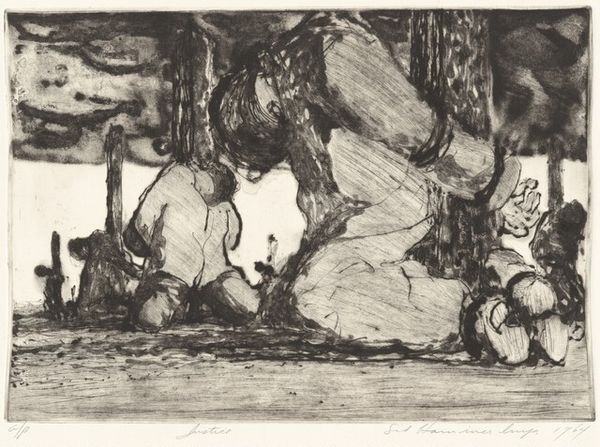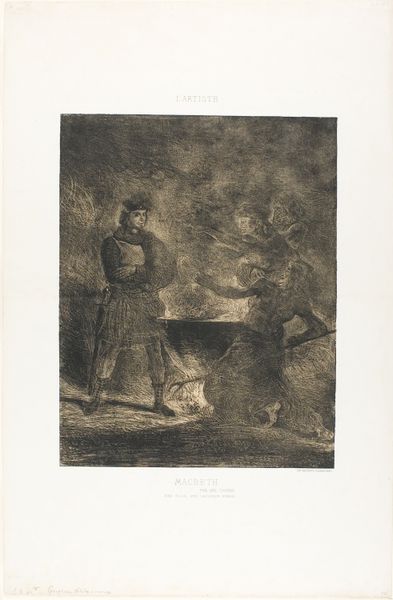
Dimensions: 9 1/4 x 7 in. (23.5 x 17.78 cm) (image)
Copyright: No Copyright - United States
Curator: Before us, we have Picasso’s etching, "Les pauvres," possibly created between 1905 and 1913, now held in the collection of the Minneapolis Institute of Art. Editor: The mood is immediately somber, isn't it? The heavy use of ink, the scratchy lines... it feels stark, desolate. A palette of blacks and greys that does not give any glimmers of joy. Curator: Indeed. The image portrays poverty and its psychological impact. Etchings, being reproducible, held particular value for disseminating socially conscious messages in early 20th-century Europe. Editor: Observe how the figures are arranged. There's this looming, dark figure standing behind two children and what appears to be a seated woman. The use of line is so expressive, delineating form, creating the illusion of depth, yet somehow flattening the scene at the same time. There's no escaping flatness here; these individuals are trapped within these spatial arrangements. Curator: The narrative implications here are significant. Picasso himself struggled financially at times; themes of destitution appear frequently in his Blue Period works. "Les pauvres" captures a broader societal issue but certainly draws from personal experiences of material struggle. Editor: The contrast is compelling; observe the meticulous detail in the face of the man and his dark clothing against the almost primitive etching marks creating the sky behind him. Curator: Beyond the technique, consider how it positions the viewer. Are we detached observers, or are we implicated in their predicament? The proliferation of these sorts of prints enabled mass-circulation of politically conscious images during times of widespread inequality. Editor: Absolutely. "Les pauvres" is an important technical showcase in monochromatic tonal range that underscores the grim reality of early 20th-century European life. Curator: Right, a deeply evocative piece, reflecting broader political tensions. Editor: I agree. There is also so much beauty in that sadness and how it can inspire.
Comments
No comments
Be the first to comment and join the conversation on the ultimate creative platform.
